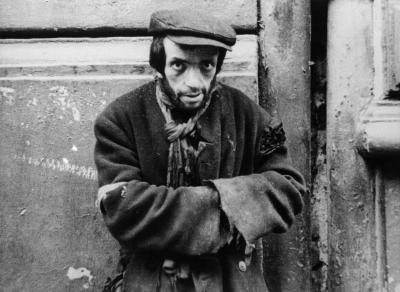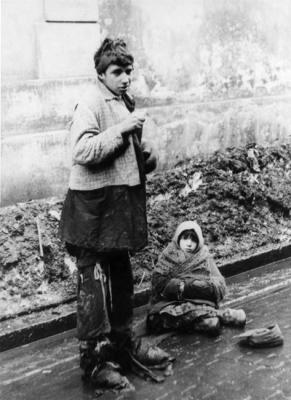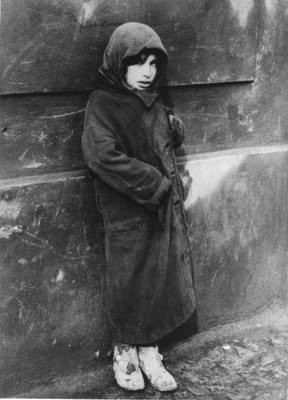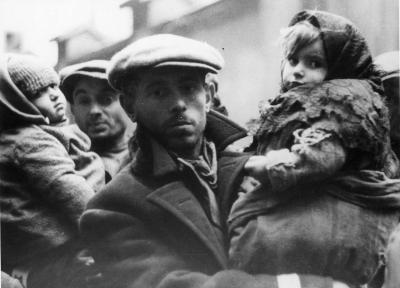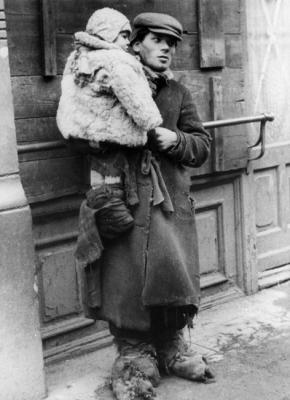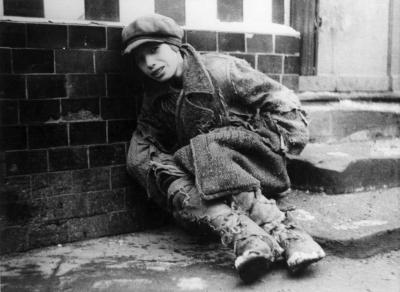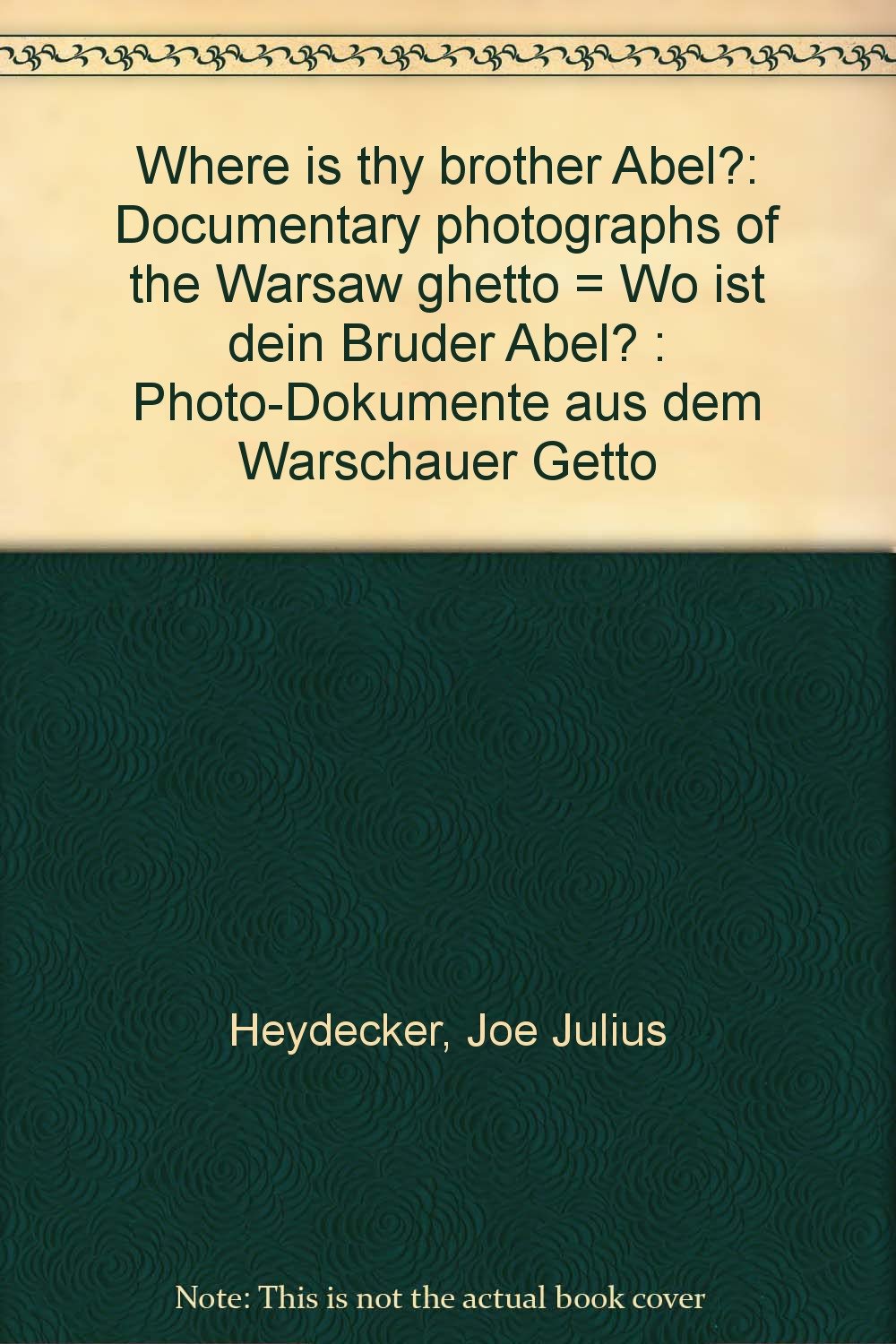
“Where is thy brother Abel? Documentary Photographs of the Warsaw Ghetto”
Sunday to Thursday: 09:00-17:00
Fridays and Holiday eves: 09:00-14:00
Yad Vashem is closed on Saturdays and all Jewish Holidays.
Entrance to the Holocaust History Museum is not permitted for children under the age of 10. Babies in strollers or carriers will not be permitted to enter.

“Where is thy brother Abel? Documentary Photographs of the Warsaw Ghetto”
Where is thy brother Abel? Documentary Photographs of the Warsaw Ghetto
Joe J. Heydecker
Atlantis Livros
Sao Paulo, 1981
107 pages
In 1981, Joe Heydecker, then living in Brazil, decided to publish his Warsaw Ghetto photographs. He wrote:
“I find it hard to explain why nearly forty years have passed before I was able to publish these pictures. I believe I simply had not strength enough to write the text, although I tried several times. I still feel unable to do so. Now I do what I can to set down what is seared into my memory, weak as it may be, because time is running out.”
In this short book, Heydecker describes how, as a young German soldier, serving as a laboratory technician, he entered the Warsaw Ghetto twice in early 1941 and took photographs of what he saw there.
A few years earlier in 1937 he had spent a year travelling with his parents all over Poland, especially in Galicia and Volhynia, where they were welcomed as guests of Jewish families. His parents worked in the film industry. Heydecker had broken off his work as an apprentice photographer in order to travel with his parents, who had previously spent time outside Germany, feeling uncomfortable with the political situation. Heydecker quotes his father as having said, “In such a country as this I will not live.”
During the year Heydecker spent in Poland, he spent much time in Warsaw and states that he was “able to move about in a world that was then still free, to read books, journals and papers and assimilate information that would have been impossible inside Germany after 1933. I saw Nazi Germany as it really was. This not only immunized me to its temptations, I opposed it”.
On the family’s return to Berlin in 1938, he was called up and started training in a transport division. At the beginning of 1941 Heydecker was transferred to Warsaw as a photo laboratory technician. He remembered his Jewish friends and decided to try to find them again. This was when he decided to enter the ghetto, and began to take photographs. Entering the ghetto as a German soldier presented problems for him personally, for he worried about how the Jewish population would react to him. They were not to know he meant no harm.
As for motives, Heydecker states that at no time did he take photographs as part of his official duties. His activities were his own, and he was aware of the risk of taking photographs in the ghetto, which was forbidden. He was torn by shame, hate and helplessness, and vowed to keep his photographs hidden until they could be shown to the world. Heydecker lived with his own personal guilt for taking photographs and not doing anything to help the unfortunate Jews living in the ghetto.
Heydecker describes how he managed to get into the ghetto with his camera and to take photos.
His empathy with the Jewish people can be seen through the lens of his camera, but it took him 40 years before he could bring himself to publish the photographs. The faces of those human beings, who had lived, talked, laughed, had lives and families before the Holocaust, and then were murdered, haunted him. For Heydecker there was no stereotypical Jew. He saw the Jews as individuals – people he had known and befriended as a German, in pre-war days. His photographs are taken through the eyes of a human being, who saw the dreadful images before his eyes and wanted to record them for posterity. He thought that people might not believe him when he explained what he had seen. In addition to Heydecker's photographs, the book contains some photographs taken by photographers Albert Cusian and Erhard Josef Knobloch, who were stationed with Heydecker in Warsaw.
Heydecker's wife and friends later helped to conceal the photographs until Heydecker exhibited them for the first time in São Paulo in 1981.
Heydecker returned to the ghetto one last time in November 1944, a visit he describes in the book:
"....Our detail split up. With a comrade I picked my way through the rubble that had once been Marszalkowska Street. We shone our torches into cellars. We found discarded bandages, moldy rags, a dreadful stench. We wandered through side streets, empty and deserted, climbed over ruins, homes empty and deserted, into yards and again into cellars. We found no vodka, in fact we were no longer looking for it, we were, as it were, looking for nothing; we were wandering in a groundless and limitless nightmare landscape.
The one-time ghetto lay there, nothing but rubble, razed to the ground and utterly still. Here and there a pillar or a girder remained in place. The outer limits of the ghetto disappeared in the mist of the November day. It was here I shot the last frame of the film on which I preserved the dead city of Warsaw."
Through the photographs, teachers and students alike reading the book can identify those Jews he photographed as individuals, and not as a collective whole.
Heydecker also covered the Nuremberg Trial as a radio reporter which he describes in his book "The Nuremberg Trial", 1958.

Thank you for registering to receive information from Yad Vashem.
You will receive periodic updates regarding recent events, publications and new initiatives.

"The work of Yad Vashem is critical and necessary to remind the world of the consequences of hate"
Paul Daly
#GivingTuesday
Donate to Educate Against Hate


Worldwide antisemitism is on the rise.
At Yad Vashem, we strive to make the world a better place by combating antisemitism through teacher training, international lectures and workshops and online courses.
We need you to partner with us in this vital mission to #EducateAgainstHate
The good news:
The Yad Vashem website had recently undergone a major upgrade!
The less good news:
The page you are looking for has apparently been moved.
We are therefore redirecting you to what we hope will be a useful landing page.
For any questions/clarifications/problems, please contact: webmaster@yadvashem.org.il
Press the X button to continue




